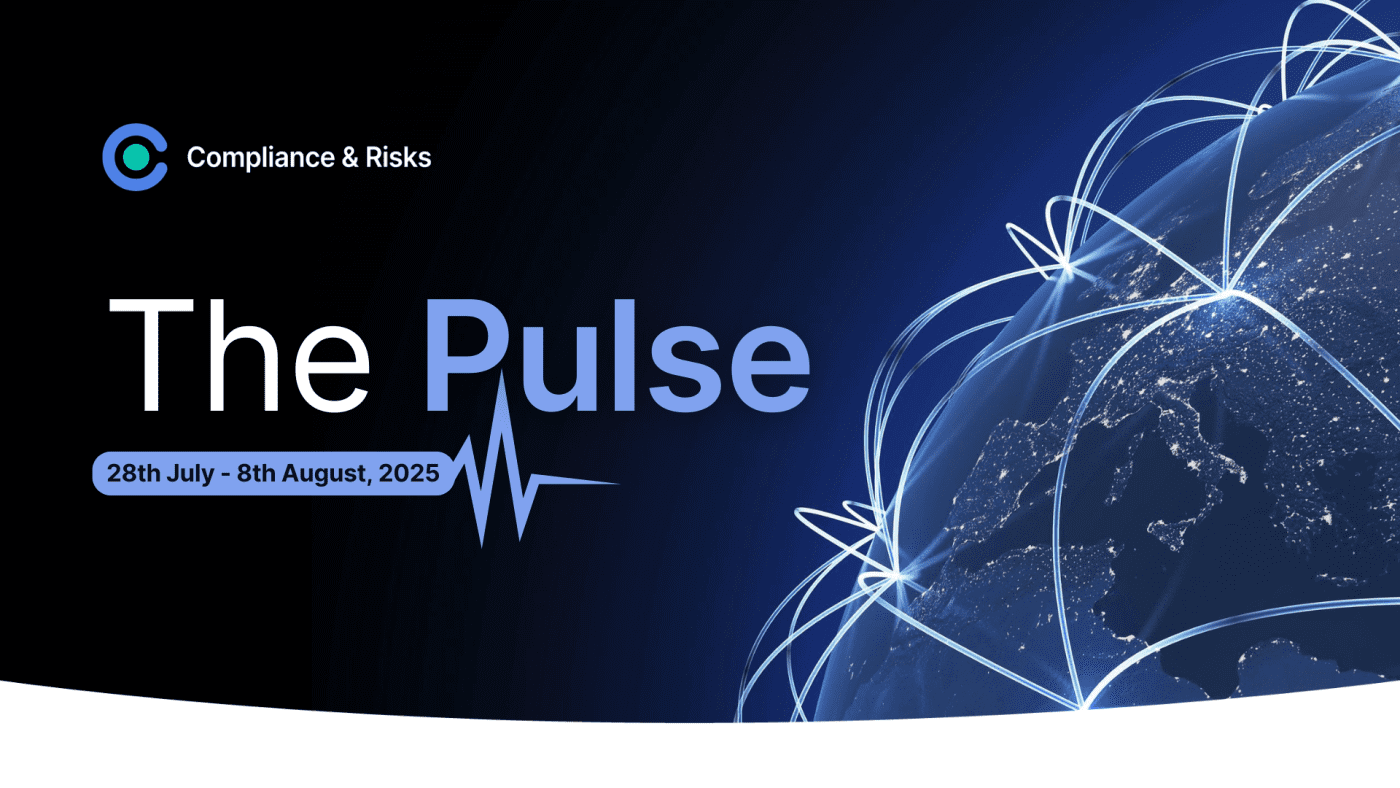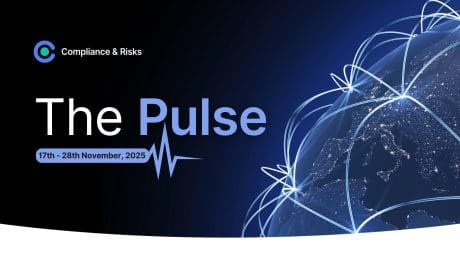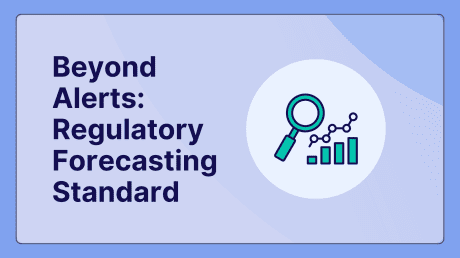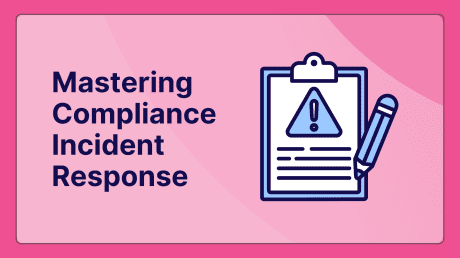
The Biweekly Pulse: 28th July – 8th August – PFAS, Medical Devices and EU Batteries Regulation Updates

The Pulse was originally posted on 13th August, 2025. Further regulatory developments may have occurred after publication. To keep up-to-date with the latest compliance news, sign up to our newsletter.
Check out the latest 2025 Regulatory Compliance Updates with The Pulse, your biweekly source for global regulatory insights!
This Week’s Trending Sources in C2P
- Future-Proofing Product Compliance: Navigating the EU Digital Product Passport, Guide, July 2025
- US Product Compliance 2025: Key Federal & State Changes to Watch, Webinar Presentation, July 2025
- UK: OPSS Delivery Report 2024-2025, July 2025
What is Our Content Team Talking About?
France Launches Second Consultation on a Draft Decree Clarifying Concentration Values and Exemptions under PFAS Restriction Law No.2025-188
by Célia Le Lièvre, Senior Regulatory Compliance Specialist
On 7 August 2025, the French Ministry of Ecological Transition initiated a second public consultation on a draft decree that defines the residual concentration values below which the prohibitions outlined in sections I and II of Article 1 of the so‑called PFAS Restriction Law No. 2025‑188 shall not apply.
As a reminder, Article 1 (I) of Law No. 2025-188 prohibits, with effect from 1 January 2026, the use of per- and polyfluoroalkyl substances (PFAS) in cosmetics, wax products, textile clothing products, footwear and waterproofing agents for textiles and footwear.
The law also stipulates that, from January 1, 2030, the scope of the PFAS ban will be extended to include all textiles.
However, the law specifies that below a certain concentration value, the above prohibitions (starting from 2026) shall not apply. The draft decree proposes the following three cumulative criteria to define the residual concentration values:
- For each individual PFAS detected through targeted analysis, excluding polymers, the threshold is set at 25 parts per billion (ppb);
- For the total concentration of PFAS measured as the sum of targeted PFAS analyses, including where applicable the prior degradation of precursors but excluding polymers, the threshold is 250 parts per billion (ppb);
- For PFAS including polymers, the threshold is set at 50 parts per million (ppm).
In addition to allowing exceptions for products containing PFAS below the above concentration values, the law contains specific exemptions for protective clothing and footwear. The draft decree clarifies that the exemption covers:
- Personal protective equipment (PPE) governed by Regulation (EU) 2016/425;
- Waterproofing agents designed for restoring the waterproof properties of PPE.
Regarding the prohibition on all PFAS-containing textiles (from January 2030), law No. 2025-188 includes exemptions for technical textiles used in industrial applications and other textiles required for essential purposes, provided that no suitable alternative is available.
The draft decree proposes that the exemption should specifically cover:
- Textiles used in industrial applications, such as:
- High‑performance membranes used in filtration or separation processes;
- Coatings designed for fire protection in means of transport;
- Textiles intended to reduce noise and vibration.
- Textiles for essential purposes, namely:
- PPE designed to protect the user against risks listed under risk category III in Annex I, points (a), (c) to (f), (h), and (l) of Regulation (EU) 2016/425;
- PPE intended for use by armed forces, internal security forces, and civil protection forces;
- Sanitary textiles for medical purposes, including medical care products referred to in point 5° of section III of Article R. 543-360.
This draft decree was introduced alongside a second draft decree that sets out a national strategy for the gradual elimination of industrial aqueous PFAS discharges within five years. Both decrees are open for public consultation until 5 September 2025.
The draft decree is scheduled to enter into force on the day following its publication.
What Are Our Knowledge Partners Talking About?
Are Medical Devices Affected by the German Accessibility Strengthening Act Implementing the European Accessibility Act (Directive (EU) 2019/882)?
In Brief
The German Accessibility Strengthening Act (BFSG), implementing the European Accessibility Act (Directive (EU) 2019/882), takes effect on 28 June 2025.
While medical devices themselves are not within the scope as a product category, accessibility requirements may still apply where medical device software operates on EAA-covered hardware (e.g., smartphones, tablets, etc.). E-commerce services, including web shops selling medical devices directly to patients, must also be EAA compliant. Certain components of medical or healthcare apps, particularly account creation and registration functions, will likely need to meet EAA accessibility standards, as they involve consumer contracts.
It remains to be seen whether this only applies to subscription-based apps or also to free apps.
In More Detail
On 28 June 2025, the German Accessibility Strengthening Act (Barrierefreiheitsstärkungsgesetz — BFSG) will enter into force. It implements Directive (EU) 2019/882 on accessibility requirements for products and services. The legislation aims to facilitate access to certain critical products and services for persons with disabilities. In a nutshell, manufacturers of in-scope products and providers of in-scope services must ensure that their respective products and services are easily accessible based on the POUR principles (perceivability, operability, understandability and robustness).
Relevant requirements are set out in an implementing ordinance (BFSG) adopted by the German Labor Ministry. As a key feature, products and services must be easily accessible by design. This includes compatibility with assistive technologies and navigability by persons with various disabilities. As a key feature, access by two different sensory channels must be warranted. For visually impaired consumers, an auditory channel should enable screen‑reader output, with texts and labels read aloud via software. Additionally, audio prompts and speech output in interfaces may be required. The visual channel may include text, icons, graphics, and videos with subtitles and captions, as well as zoomable instructions for use and color‑independent indicators to ensure legibility. A tactile channel may consist of braille displays or embossed letters.
For online services offered through websites, already existing technical standards (like Web Content Accessibility Guidelines WCAG 2.2 and EN 301 549) may be referred to. Exemptions from the EAA may be invoked by microenterprises and SMEs, as well as by economic operators demonstrating a disproportionate burden arising from full EAA compliance of their products or services. Under a grandfathering rule, existing legacy service contracts remain unaffected.
1. Medical Devices Are Not in Scope as a Product Category
The range of consumer products captured by the EAA (and accordingly the German implementing act) is limited to: general-purpose computers and operating systems; smartphones and related telecommunications equipment; smart TVs and digital television equipment; e-readers; self-service terminals such as ATMs; and ticketing and check-in machines, to name the most relevant ones. Medical devices are not within the scope. Usability engineering remains a “safety by design” obligation for manufacturers purely based on the Medical Devices Regulation (EU) 2017/746 (MDR). It is addressed in the MDR’s Annex I General Requirements (e.g. in Sec. 5a, where it demands risk reduction through appropriate ergonomic features). However, under the MDR, device accessibility for disabled patients is intertwined with the intended purpose of a device specifically designated for use by this patient demographic (e.g. video magnifiers for the visually impaired).
2. Interoperability of Medical Devices with EEA-Covered Multipurpose Hardware and Software (PC, Smartphones, Tablets) to be Noted
Nevertheless, medical device software (e.g. blood pressure trackers, diabetes diaries, pill reminders, etc.) usually runs on and interoperates with conventional desktop or laptop computers, as well as with smartphone or tablets, including their operating system software. These universal-purpose types of hardware and software are explicitly subject to the EAA. IT companies advertising rather ubiquitous multipurpose hardware and software may adjust some of their features to adhere to EAA standards by changing keyboards (e.g. incorporating buttons with discernible shapes) or visual displays (e.g. providing for more adjustable brightness, contrast, text size, compatibility with screen magnifiers), or enhancing audio support (such as TalkBack (Android), VoiceOver (iOS), or Narrator (Windows)). Manufacturers of medical devices software may be interested in ensuring the compatibility of their medically purposed systems and apps with (future) EAA-compliant features for their “host” hardware and software platforms.
3. E-commerce Services in the Form of Online (Web)Shops for Selling Medical Devices to Consumers
Pursuant to Sec. 1(3) No.5 of the German BFSG implementing Act (which is equivalent to Article 2(2)(f) of the EAA), “ecommerce services” are included in the act’s scope of application. E-commerce services are defined as: Services provided at a distance, through websites and mobile device-based services by electronic means and at the individual request of a consumer with a view to concluding a consumer contract.
The distinguishing element is included in the intended purpose of the (digital) service to facilitate or enable (“with a view”) the conclusion of a consumer contract. In Germany, consumer contracts are defined in § 310(3) of the Civil Code (BGB) as contracts between entrepreneurs and consumers. It is undeniable that all online shops selling consumer products check the box for e-commerce services and are thus captured by the EAA.
Where the EAA singles out particular categories of “products”, which themselves (by design and presentation) need to be EAA-compliant (i.e. easily accessible to consumers with disabilities or handicaps (mainly blind or deaf persons)), web shops fall under EAA regardless of the particular category of consumer product commercialized online. Accordingly, online or web shops selling medical devices intended for patient self-application must comply with the EAA. As it is known, there are endless examples of medical devices sold online to consumers, such as glucose test strips, rtCGM sensors, wound dressings, incontinence products, mobility aids (crutches, wheelchairs, etc.), urinary catheters, pulse oximeters, thermometers, blood pressure meters, infusion pumps, feeding tubes and apnea monitors, among others.
Accordingly, while purely informational (sub)websites or sections displaying advertisements are not within scope of the EAA, all websites or subpages of online shops that directly lead to consumer purchases of medical devices via ecommerce must be easily accessible in accordance with the EAA. The following segments of online shops are likely in scope of the EAA:
- Homepages of an online shop, including registration forms used to create customer accounts
- Webpages with shopping cart functionalities and checkout and payment processing pages
- Product detail pages, including support pages providing information relevant to a purchasing decision
- Websites displaying contract withdrawal or cancellation options (where this content is not aimed at concluding a contract, consumer protection regulations, such as Sec. § 312k of the German Civil Code, establish requirements for readable information, so that accessibility by design may be indirectly required to facilitate usage by visually impaired persons)
- Registration forms — registration forms used to create a customer account also fall under the BFSG, as the customer account forms part of the contractual relationship between the provider and the customer, and the form is used to enter into that relationship
- Sub-websites providing general sales terms and conditions and privacy notices (as their content affects the contractual basis of the online product sales)
- Sites providing information on shipping costs and payment methods (as such conditions form essential elements of any e-commerce transaction)
Manufacturers and distributors engaged in D2C e-commerce with medical devices must comply with EAA requirements.
4. E-commerce Services in the Form of Medical or Healthcare Apps Intended for Use by Patients
Depending on categorization and definition, the ballpark number of medical or healthcare apps available in Europe alone exceeds 50,000. Innumerable examples can be stated, such as the following: Chronic disease-management apps (e.g. for diabetes management (tracking blood glucose, insulin, carb and sugar consumption, etc)); vital signs monitoring apps (e.g. for tracking heart rates, blood pressure, oxygen saturation, etc., often integrated with wearable devices); medication-management apps (incorporating, for example, pill reminder and medication tracker functions, often combined with drug interaction warnings); apps supporting mental health and wellbeing (e.g. for mood tracking or cognitive behavioral therapy); post-operative and rehabilitation support apps (e.g. assisting patients after surgery or during rehabilitation with exercises, reminders, symptom tracking, etc.); women’s health and pregnancy apps (e.g. tracking menstrual cycles, fertility windows, pregnancy health, etc.).
It is fair to ask whether only some or all of the above must comply with the EAA under the concept of “e-commerce services”. Reasonably, a distinction may be made when considering whether the apps are offered free of charge or for a fee.
4.1. Medical or Healthcare Apps Commercialized for a Subscription Fee
To the extent medical or healthcare apps are commercialized in a way that patients (consumers) must pay a subscription fee, it can hardly be questioned that the app qualifies as an EAA-regulated “e-commerce service” in its own right. Recital (43) of the EAA Directive (EU) 2019/882 provides that:
E-commerce services accessibility obligations of this Directive should apply to the online sale of any product or service and should therefore also apply to the sale of a product or service covered in its own right under this Directive.
Notably, reference is made to “sales” of services, implying a fee-based transaction. Instead of monetary payments, the categorization of an app as fee based may also be a result of payments in kind, where users make their data available for the app operator to exploit for further business purposes (cf. Sec. 312(1a) German Civil Code). However, the built-in functionalities and features of the medical or healthcare app itself (e.g. visualizations of heart rate readings; sensory channels for alerts like sounds, vibrations, flashing, etc.) should not be affected by the EAA requirements. Rather, the patients’ access route to putting a medical or healthcare app into service is pulled under the EAA obligations.
Accordingly, it can be expected that smartphone-enabled processes involving account creation, user registration and completion of onboarding forms, among other things, will (in principle) need to be easily accessible to disabled app-using patients. As a side note, digital health applications (DiGA apps) eligible for reimbursement on prescription by German health insurance funds are subject to accessibility requirements that have been independently established by German DiGA regulations pre-dating the EAA implementation act. Accessibility requirements also extend to the DiGA’s intrinsic functions and features, rather than only to account creation or registration processes.
4.2. Medical or Healthcare Apps Offered Free of Charge
For the vast majority of apps, no fee is charged. Do components of such apps (namely account creation and user registration processes, and maybe also the display of user instructions) also need to be compatible with the EEA’s easy access requirements for the benefit of visually or audially impaired users? Where the legislative architecture of the EAA Directive, and notably its Recital (43), suggests a limitation to e-commerce services actually implying “sales”, which would eliminate free services from the scope, an interpretation of the law based on the German Civil Code indicates otherwise.
Calling to mind the EAA’s definition of “e-commerce services”, being electronic services transmitted through websites and mobile devices “with a view to concluding a consumer contract”, German civil law does not require an element of consideration or payment for establishing a consumer contract (Sec. 310(3) BGB). Rather, free online services rendered by entrepreneurs to consumers are considered to be framed as consumer contracts (usually formed by the consumer/app user accepting the general terms of use).
Accordingly, stakeholders in Germany advocate for a broad scope of application, also encompassing access to free (app-delivered) services associated with e-commerce. However, this broad scope of the accessibility requirements under the German BFSG EAA implementation act is not yet permanent. As medical apps intended for patients cater to vulnerable populations anyway, manufacturers may voluntarily opt for EAA compliance if they aim to promote their apps in the context of disease awareness or raising attention to the indications they are active in.
What Are Our Clients Asking About?
I’m confused about the scope of EU: Batteries and Waste Batteries, Regulation (EU) 2023/1542. Is this intended for companies that are manufacturing batteries? I am trying to understand requirements in the EU regarding an article that contains a button battery.
Answered by Andrew O’Neill, Regulatory Compliance Specialist
This regulation has a broad scope and is not limited to companies that manufacture batteries. It applies to all batteries placed on the EU market, including those integrated into other products, such as your product with a replaceable button battery.
Under this regulation, button batteries are classified as portable batteries, and their compliance is required regardless of whether they are sold separately or incorporated into a device. Because you are placing a product containing a battery on the EU market, you are considered an economic operator, either as a manufacturer, importer, or distributor, depending on your role. Even if you are not directly manufacturing the battery, you are responsible for ensuring that it meets EU requirements before being placed on the market.
You must ensure that the button battery you use is fully compliant with the EU regulation, which includes meeting safety, sustainability, and labeling requirements. The battery should carry the appropriate markings, such as its capacity, CE marking, and, where applicable, the crossed-out wheeled bin symbol and any required chemical substance markings for lead, cadmium, or mercury. The product itself also needs to indicate that it contains a battery and include instructions for safe removal.
From 18 February 2027, all batteries in appliances must be removable and replaceable by the end-user or by an independent professional. As your product already uses a replaceable button battery, this requirement will generally align with your current design, although the regulation does specify accessibility standards that will need to be met.
If you are the first entity placing this product on the EU market, for example, as an importer or selling under your own brand, you may also need to register for Extended Producer Responsibility obligations in each EU Member State where the product is sold. This involves registering as a battery producer and fulfilling collection and reporting obligations.
While you are not responsible for manufacturing the battery itself, you do need to ensure that any batteries used in your product are compliant with the regulation and that you meet your obligations as an economic operator.
Stay Ahead Of 2025 Regulatory Compliance Updates with The Pulse
Want to stay on top of 2025 Regulatory Compliance Updates?
All insights in The Pulse come directly from C2P – the trusted compliance platform used by over 300 of the world’s leading brands. With coverage across 195+ countries, C2P empowers you to achieve, maintain, and expand market access faster and with confidence.
C2P is an enterprise SaaS platform designed to meet your unique compliance needs. It brings together everything in one place – regulations, standards, requirements, and evidence – so you can manage compliance across the enterprise with ease.
Need more? Our tailored add-on packages unlock use-case-specific solutions, enriched global regulatory content, and direct access to a global team of subject matter experts and professional services.
C2P is your key to unlocking global market access.
- Accelerate time-to-market for products
- Reduce non-compliance risks that impact your ability to meet business goals and cause reputational damage
- Enable business continuity by digitizing your compliance process and building corporate memory
- Improve efficiency and enable your team to focus on business critical initiatives rather than manual tasks
- Save time with access to Compliance & Risks’ extensive Knowledge Partner network
Keep Your Finger on the Pulse of Regulatory News!
Join 30,000+ compliance professionals for 2025 regulatory compliance updates on hot compliance issues, market insights on the latest trends, and free regulatory webinars and whitepapers








